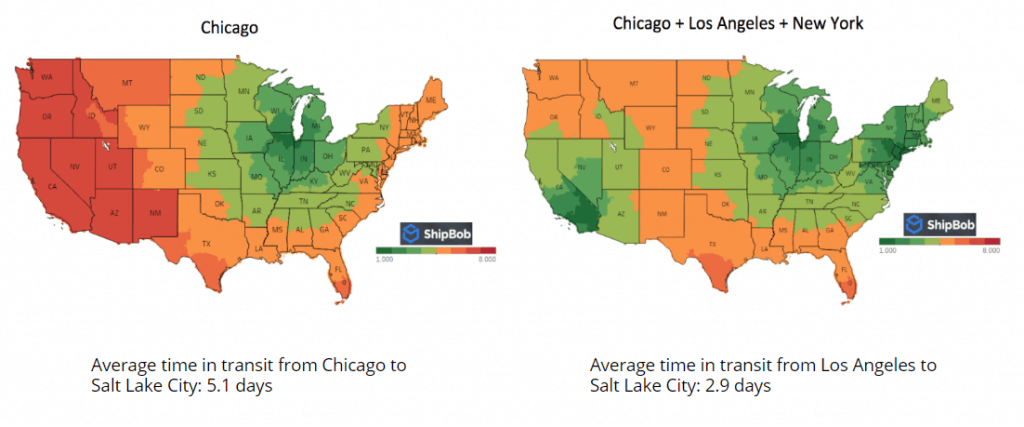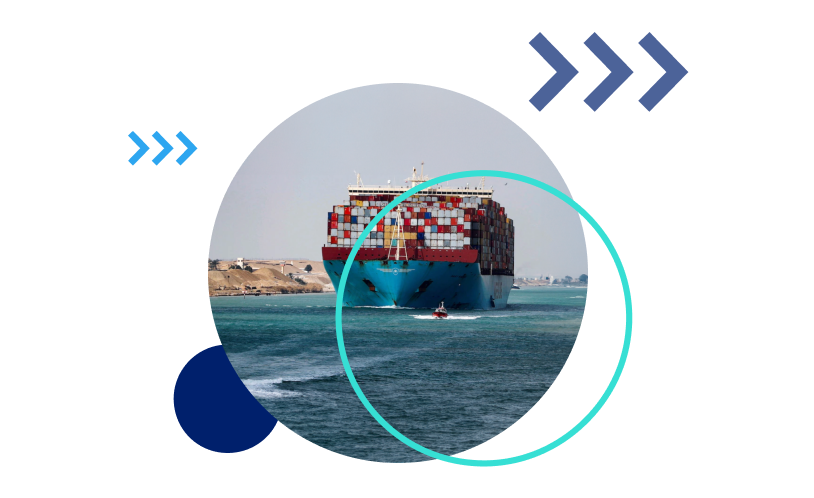If you’re like most businesses, you’re thinking ahead to hit your Q4 goals. Jon Knott, Partnership Enablement Manager at ShipBob, joined us for a webinar on how to do just that: maximize Q4 by listening to your data, distributing your inventory, and offering free shipping to customers. Read on, and watch the full webinar below.
Shipping inventory from overseas?
Listening to your data to drive Q4 decisions
Today, brands are increasingly able to gather data across multiple platforms. Far more difficult is bringing that data together to get a full picture of your customers’ shopping experience. But not using that full customer picture can mean leaving money on the table.
Here are some ways to optimize your data to capitalize on the Q4 rush:
Analyze last year’s Q4 data to predict order uptick
First, it’s important to take a step back and consider what was successful in Q4 last year– and that means analyzing last year’s Q4 data.
What went well last year? Where was your business able to deliver for your customers? Were there certain SKUs that performed better than others?
With this data, you can plan to invest in sourcing items that brought success in the past– or make changes.
Understand customer order data
Customer order data is often overlooked– but can be an important resource. Use heat maps to see where customers are ordering from on your site. Track customers’ order quantities over time. Insights like these are invaluable for understanding your customers and making better decisions.
Ensure inventory depth is substantial
When thinking about retaining your customer base, consider your inventory depth: is your business equipped to split items across multiple fulfillment centers in order to cut delivery time, or does it not have the inventory depth for that to make sense? Use your inventory data to analyze where you can provide more value.
Understand the desired impact of your marketing campaigns
To really understand the impact of your marketing campaigns, be specific about your goals and desired outcomes– and analyze your data against these goals. Marketing campaigns are only valuable if they are aligned with your goals.
Dive into your inventory data
One difficult situation for business owners is unexpected demand, or lack of supply, for certain high-performing SKUs. This is especially common during peak shipping seasons. Using data to enable careful forecasting and helpful steps like real-time notifications can prevent stockouts– which means you can capitalize on last-minute shopping.
Connect data across your supply chain
Look at your data from different platforms as one complete customer journey. That means getting a full picture all the way from inventory count at each fulfillment center, to customer behavior on e-commerce platforms, to delivery status with your carriers. This data helps you plan, and enables you to communicate effectively with customers about order status.
The more insight that you have across the entire supply chain, the better.
Use data to provide transparency throughout the entire customer purchase journey
Many businesses are using data to optimize the post-sale experience for consumers, which is a great way to build a brand customers feel good about choosing.
Here are some ways to create this positive experience across the entire sales cycle.
First, when a customer places an order, make sure they get an email immediately with the order number and tracking information. This allows the customer to feel secure, knowing the purchase has happened, and enables them to track orders on their own time. Additionally, email customers a phone number with times you can be reached, as well as social platforms where they can engage you. Finally, update customers’ order information with tracking information so they can see exactly where their purchase is at all times.
These steps all proactively engage your customers through transparency across the entire customer journey. And it’s all enabled by having data across your entire supply chain.
Distributing inventory to cut delivery time in half
Being able to distribute inventory is highly beneficial for many businesses.
What does it mean to distribute your inventory?
It means distributing your units across several different fulfillment centers in various locations, instead of putting them all in one central place.
There are a few key benefits to inventory distribution:
- Faster delivery times
Take the following example: Let’s say your customer in Salt Lake City places an order and all your inventory is in Chicago. The average transit time from Chicago to Salt Lake City is about 5.1 days. With distributed inventory, shipping time could drop to 2.9 days on average. When your goods are closer to your end consumers, they get their packages faster– which improves the customer experience. - Better Conversion Rates
When your goods are shipped from a location closer to the destination, you’ll be able to offer customers two or three day shipping, which will lead to higher conversion rates. In today’s Amazon economy, people expect fast shipping. If you provide it, they’re more likely to shop with you.

Does distributed inventory make sense for you?
Whether your business can distribute inventory depends on your inventory depth, which may vary by SKU.
Many businesses can distribute inventory with some of their items, but not all. Starting with high-performing items, especially during the holiday season, can help you meet your goals.
Marketing data improves fulfillment– which improves marketing
You already use customer data to make marketing decisions. This same data can help you make fulfillment decisions as well– which can in turn make your marketing efforts more successful.
For example: if you know that 60% of your customers are on the west coast, but you’re only fulfilling out of the east coast, it’s a missed opportunity in a few different ways. First, you’ll have longer shipping times. Second, you’ll need to charge higher shipping fees. Additionally, you’ll lose out on being able to target customers with ads based on their geographic location.
When you use data to understand where your customers are, you can target them with relevant, appealing content. This same data also enables you to have inventory where your customers are– which means being able to provide the fast, seamless experience shoppers want.
Offering free shipping for better customer experience
Everyone knows– free shipping isn’t really free. But with a little inventory strategy, you might be able to offer it to your customers, and reap the benefits.
Today’s customers expect free & fast shipping
First, it’s crucial to understand that free shipping is high stakes. 65% of online shoppers look at shipping costs and delivery times before adding items to their cart.
That is, more than two-thirds of customers consider the experience of shopping with your business before even looking at your items. This is because today’s consumers have a real choice about where to shop.
The e-commerce business that’s not selling on an Amazon but instead wants to build a brand with customer loyalty needs to be able to compete with Amazon on experience. That means being able to offer competitive shipping cost and speed for these choosy customers.
How to offer free shipping in Q4
Shipping may not be free, but offering free shipping could actually increase your return.
Check your business data and see if any of the following methods for offering free shipping could work for you:
Set the minimum order amount
One way many businesses are able to subsidize free shipping is by raising their average order value.
Here’s an example.
Let’s say that the average order value for your business– that is, the average amount per transaction– is $50.
What if you offered free shipping on orders of $75 or more?
By making your minimum for free shipping $75, you encourage customers to spend more with you– and can ultimately increase average order value by $25. So even without charging for shipping costs, you’ll see an increase of full price revenue while also improving conversion rates by offering free shipping.
Offer free shipping on select items only
If you have a lot of a lot of different items, consider offering free shipping on only some of them. For customers, free shipping on all items will be the best experience, but if your business isn’t there yet, you might start with select items.
Offer free economy shipping
Another option to consider is offering free shipping in exchange for a longer shipping time– so an order might not arrive in two days, but can arrive for free for those customers willing to wait five or six days.
Include Shipping Prices in the Cost of the Product
Consider: can I bake the shipping price into the cost of the product?
This is a good option if you’re still setting your pricing– you’ll build the shipping cost into the cost of the product and those will be the prices your customers will get used to.
If you’re already an established business, it still doesn’t hurt to examine if you can manage a price increase while still providing the same level of customer satisfaction.
For example, for certain high-value items, raising a price by 2% or 3% probably won’t make a difference to customers. However, for a lower price item, any increase might affect a customer’s willingness to pay.
Free Shipping Membership
One other option is free shipping membership, which is what Amazon has done with Prime to great success. This option is an especially good one for businesses that sell recurring items, such as weekly supplements or monthly hair products. For that type of product, an annual or monthly shipping membership is a great way to build brand loyalty and retain customers.



